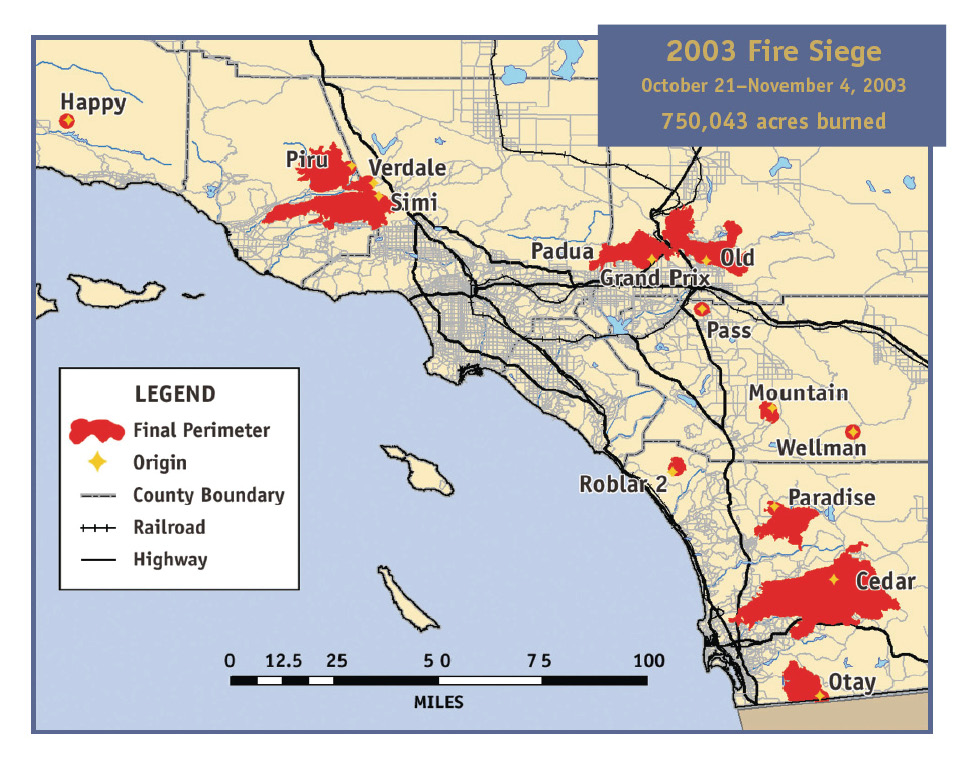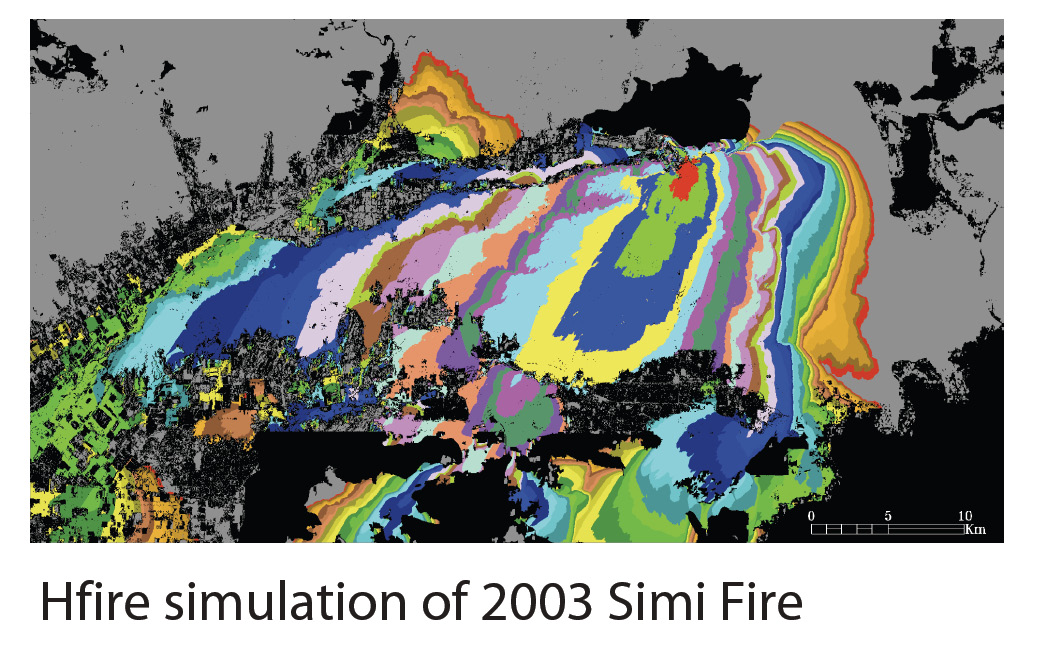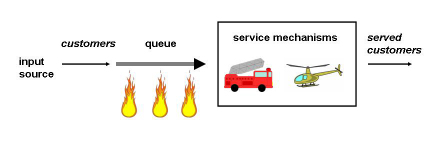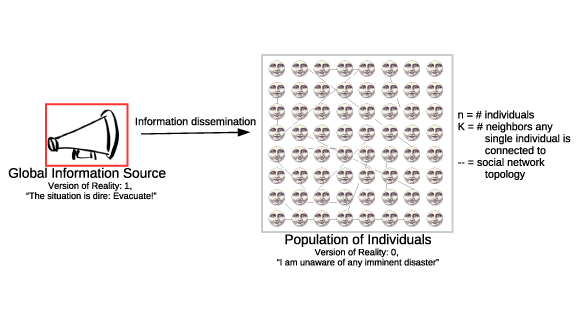Disaster response

The work described on this page is being performed in collaboration with David Alderson and Emily Craparo at the Naval Postgraduate School and is part of the much larger Multidisciplinary University Research Initiative (MURI) for Next Generation Network Science.
Wildfires and Disaster Response (Nada Petrovic)

The economic, environmental and social impact of wildfires is an increasing problem in California and elsewhere. Suppression decisions present a complex resource allocation problem involving a combination of inputs. We examine tradeoffs which arise in wildfire response by combining a dynamic model of fire spread, an economic cost model, and population data. Statistical distributions of fire frequency versus size are generated using HFire, an efficient Rothermel based model for fire spread. Tradeoffs between resource costs and assets at risk determine the go versus no go decision for an individual fire. We also evaluate the cost of optimal and non-optimal strategies during simultaneously burning fires. Finally we compare our results with data from the 14 simultaneous fires of October of 2003 and the 16 of October of 2007 to consider the decisions made in real situations.

Wildfires and Disaster Response: Dynamics (Nada Petrovic)
Wildfire response demands dynamic decision tools because fires and suppression evolve simultaneously. Time delays can lead to larger fires and thus greater demand for resources. We capture this tension using a queuing model that treats fire progression as a birth and death process, with rates that incorporate intrinsic fire dynamics and suppression. Using this framework we explore tradeoffs in effectiveness and time of response, as well as implications for spatial prepositioning of resources.
Influence of Information Networks in Collective Evacuation Dynamics (Danielle Bassett)
Human decision-making is an important component of evacuation research, and understanding this complex factor could help make evacuations safer, swifter, and more effective, inform evacuation policies and multilayer traffic simulations, and provide much needed insight into possible alterations to public safety education and awareness campaigns. In this work, we model a population of individuals who receive information about an impending disaster from multiple sources, and must decide whether to stay (not evacuate) or go (evacuate). We are specifically interested in characterizing the interplay between global information dissemination (official news or mandatory evacuation orders) and social sharing, where information flows over a dynamic network of friends and neighbors.
